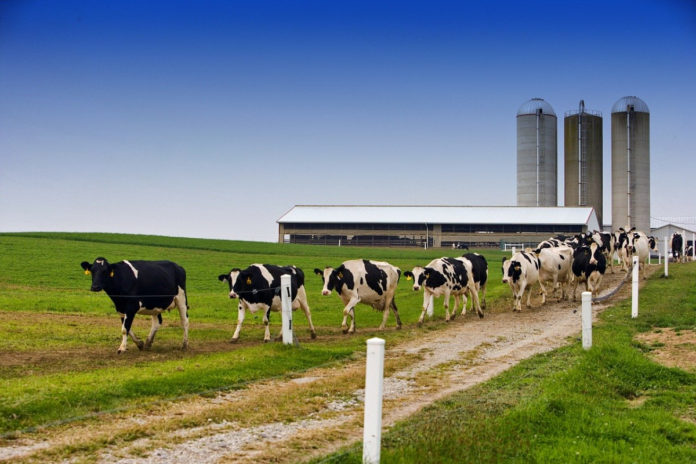Teagasc is predicting that by 2027, dairy cow numbers will increase to 1.65 million.
The forecast is contained in the state agency’s 2027 Sectoral Road Map: Dairy published earlier today (Wednesday, November 25th).
The report includes market and policy issues; potential shape and size of sector in 2027; environmental and land use implications; along with research, advisory and education actions.
It predicts that milk output will increase to almost 9.5 billion litres and national milk solids production (kg fat plus protein) to over 751,000 tonnes by 2027.
It is envisaged that there will be approximately 17,000 dairy farms, with the average herd size growing to just over 100 cows.
Teagasc says average milk delivered per farm will increase to over 557,570 litres at 3.60% protein and over 4.4% butterfat.
Achieve increases in stocking rate
The state agency outlined that the projected average stock rate increases can be achieved through:
- Improved soil fertility (correcting soil pH and both P and potassium (K) deficiencies);
- The incorporation of clover into some grass swards; n more efficient use of both organic and chemical N; and,
- Increased usage of PastureBase Ireland for improved grassland management decisions.
The report outlines the following market and policy issues:
- Future prospects for the Irish dairy industry remain positive, largely based on a growing global population, with a concurrent increased demand for healthy, nutritious Irish grass-fed dairy products.
- Ireland’s milk production will continue to grow over the next decade;
- Nonetheless, the Irish dairy industry faces challenges. This includes te reduction of its environmental footprint and the maintenance of both its competitiveness and industry reputation. Furthermore, EU and national Government policies are asking more of dairy farmers in the sustainability area;
- Milk price volatility is expected to continue to be a feature of dairy markets;
- Our grass-based milk production system remains our key comparative advantage;
- Milk of a higher quality will be required for the production of higher-value products;
- While alternative models of land use and management are expected to become more popular, it is important that the family farming model of milk production is maintained;
- An increasing number of trained dairy farmers and skilled dairy farm operatives will be required;
- Increased integration between the dairy and beef sectors will be required so as to sustainably manage the increased numbers of dairy beef calves.
Environmental and land-use implications:
The increased size of the national dairy herd, even allowing for the projected increase in stocking rate, will increase the land requirement for Irish dairying, the report acknowledges.
The requirement to improve sustainability will require a reduction in nutrient loss to water, a reduction in both greenhouse gases (GHG) and ammonia emissions and improvements in habitats for biodiversity.
Key actions to be undertaken will be guided by both the Teagasc GHG and ammonia marginal abatement cost curves (MACCs).
These will include:
- An overall focus on the improvement of nutrient (both nitrogen (N) and phosphorus (P)) use efficiency;
- A continued focus on grassland management to increase pasture utilisation, increase clover content and reduce chemical N fertiliser use;
- The implementation of appropriately designed ecological measures to halt the decline of biodiversity; and;
- The implementation of targeted actions to reduce risk of point source (farmyard) and diffuse (land) losses of nutrient to water.
That’s Farming will publish a second article on Teagasc’s research, advisory and education actions contained in the roadmap.





